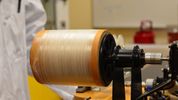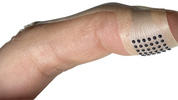In this article, the researcher explains that his group's success was attributed to stacking 3D-printed layers horizontally instead of the traditional approach of stacking them vertically when creating new tissue. That enabled the new stem cells to communicate with each other and grow together.
Now that the tissue can function like typical brain cells, the work of understanding neurological disorders such as Alzheimer's and Parkinson's disease can accelerate and help people around the world for generations to come.
A team of University of Wisconsin-Madison scientists has developed the first 3D-printed brain tissue that can grow and function like typical brain tissue.
https://www.sciencedaily.com/releases/2024/02/240201212823.htm
 unknownx500
unknownx500
















